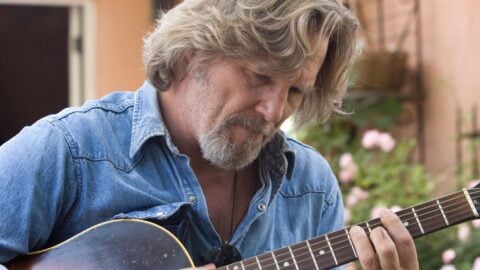
Combining documentary and fable, Le quattro volte depicts life in an unnamed hilltop town in Calabria, Italy’s southernmost region. The village is surrounded by a vast tract of forested countryside that beautifies and isolates in equal measure. Nature here is not the stuff of bucolic idylls but rather as Hayao Miyazaki conceives it: imposing and awe-inspiring. Quietly and with formal rigor, Michelangelo Frammartino’s film observes the community’s daily labors and religious ceremonies, using stationary long shots and extended takes that allow the pastoral beauty and the inhabitants’ rural practices to speak for themselves. But a deep sense of mystery abides as the film contemplates small-scale regional life and the nature of existence simultaneously—one of several ways in which the mundane is fused with the expansive.
Organized into four sections, Le quattro volte eschews the notion that man is at the center of the universe (or of cinema for that matter) by attentively depicting a cycle of transmigration through its human, animal, vegetable, and mineral stages. The depiction begins with the daily activities of a goatherd who leads his animals to pasture and back again. Apart from a nagging cough, he’s virtually silent, leaving ample room for the goats to steal their scenes. One morning, the goatherd doesn’t turn up as usual. The goats go to his home to find that he’s died in his sleep. Here Frammartino abruptly cuts to the birth of a kid, with as little fanfare as when an apple falls from a tree. Instinctively, the newborn animal begins to walk almost immediately—a monumental sight. During its first journey to pasture, the kid becomes separated from the herd. A tiny imprint within this seemingly eternal forest, it wanders alone, eventually coming to rest at the foot of a towering fir. This tree is then shown over several seasons before being felled, hauled to the village, and hoisted up as part of an elaborate festival ceremony. There are more villagers present for this event than in any other scene, but they appear as one large mass rather than as individuals. When the celebration ends, the tree is stripped and sawed into pieces, then delivered to local charcoal-makers and added to a pile of logs. The wood is then arranged to form a dome, and at its center, what resembles a funeral pyre is lit on fire.
The town’s religious traditions derive from both Catholic and pagan sources. In a lengthy slapstick sequence that takes place in a single tracking shot, villagers walk in a religious procession wearing Roman costumes and carrying a large wooden cross. When the goatherd’s dog attempts to protect the goats by darting out and barking, the participants break both character and the solemn mood to shoo him away. The interaction is hilarious because the dog is simply behaving naturally, but it also shows the procession to be a performance and an interruption of daily life. Dog and man are at odds since, being an animal, the collie is incapable of either respecting the villagers’ iconography or making the imaginative leap necessary even to conceive of symbols. Like the ceremonial tree, the dog remains resolutely earthbound. The procession passes through town and out past the goats’ pen, echoing the goatherd’s daily journey with his flock. The old man’s age and solitude suggest a long-standing connection to the natural world, and when the goats enter his quarters to discover his corpse, they not only bear witness to his life but to the end of their joint existence.
Earlier, observing another pagan rite, the goatherd trades milk for dust collected from the floor of the village church, which he dissolves in water and drinks at night before sleeping. During one of these exchanges, Frammartino cuts away to focus on dust motes suspended in shafts of light. The goatherd’s practice seems superstitious but is a way of acknowledging that we all breathe the same air. Everyone around him already takes these particles into their lungs, and ingesting them is his last bid at maintaining his corporeal existence. This sense of material interconnection pervades Frammartino’s movie and defines the villagers’ lives: they drink animals’ milk, eat plants grown in the soil, and cook and keep warm with charcoal. By calling attention to the dust, the director emphasizes the fragile and invisible, the small specks of matter that make up the whole. Long before we finally see the coal-making process, the film reverberates with its sounds, caused, we eventually learn, by the thudding of large paddles against the sides of the dome. This percussive thump unites the region’s varied activities, a collective heartbeat linking all things in time and space.








